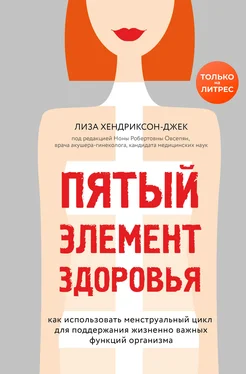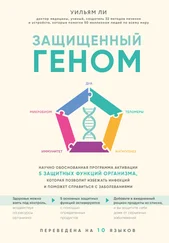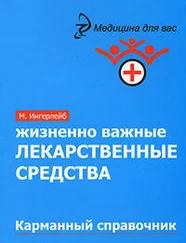26. Chocano-Bedoya, Patricia O., JoAnn E. Manson, Susan E. Hankinson, Walter C. Willett, Susan R. Johnson, Lisa Chasan-Taber, Alayne G. Ronnenberg, Carol Bigelow, and Elizabeth R. Bertone-Johnson. “Dietary B vitamin intake and incident premenstrual syndrome.” The American Journal of Clinical Nutrition 93, no. 5 (2011): 1080–1086; Abraham, G.E., and R.E. Rumley. “Role of nutrition in managing the premenstrual tension syndromes.” The Journal of Reproductive Medicine 32, no. 6 (1987): 405–422; Kashanian, M., R. Mazinani, and S. Jalalmanesh. “Pyridoxine (vitamin B6) therapy for premenstrual syndrome.” International Journal of Gynecology & Obstetrics 96, no. 1 (2007): 43–44; Wyatt, Katrina M., Paul W. Dimmock, Peter W. Jones, and P.M. Shaughn O’Brien. “Efficacy of vitamin B6 in the treatment of premenstrual syndrome: systematic review.” The BMJ 318, no. 7195 (1999): 1375–1381; Doll, Helen, Susan Brown, Amanda Thurston, and Martin Vessey. “Pyridoxine (vitamin B6) and the premenstrual syndrome: a randomized crossover trial.” The Journal of the Royal College of General Practitioners 39, no. 326 (1989): 364–368.
27. Schoenfield, Pam. “Vitamin B6, the under-appreciated vitamin.” The Weston A. Price Foundation. Accessed May 2, 2017. https://www.westonaprice.org/health-topics/abcs-of-nutrition/vitamin-b6-the-under-appreciated-vitamin/.
28. Kia, Afsaneh Saeedian, Reza Amani, and Bahman Cheraghian. “The association between the risk of premenstrual syndrome and vitamin D, calcium, and magnesium status among university students: a case control study.” Health Promotion Perspectives 5, no. 3 (2015): 225–230; Penland, James G., and Phyllis E. Johnson. “Dietary calcium and manganese effects on menstrual cycle symptoms.” American Journal of Obstetrics and Gynecology 168, no. 5 (1993): 1417–1423; Thys-Jacobs, Susan, Paul Starkey, Debra Bernstein, Jason Tian, and Premenstrual Syndrome Study Group. “Calcium carbonate and the premenstrual syndrome: effects on premenstrual and menstrual symptoms.” American Journal of Obstetrics and Gynecology 179, no. 2 (1998): 444–452; Ghanbari, Zinat, Fedieh Haghollahi, Mamak Shariat, Abbas Rahimi Foroshani, and Maryam Ashrafi. “Effects of calcium supplement therapy in women with premenstrual syndrome.” Taiwanese Journal of Obstetrics and Gynecology 48, no. 2 (2009): 124–129; Shobeiri, Fatemeh, Fahimeh Ezzati Araste, Reihaneh Ebrahimi, Ensiyeh Jenabi, and Mansour Nazari. “Effect of calcium on premenstrual syndrome: a double-blind randomized clinical trial.” Obstetrics & Gynecology Science 60, no. 1 (2017): 100–105; Takashima-Uebelhoer, B.B., and E.R. Bertone-Johnson. (2014). “Calcium intake and premenstrual syndrome.” Handbook of Diet and Nutrition in the Menstrual Cycle, Periconception and Fertility. Wageningen, Netherlands: Wageningen Academic Publishers, 51–65.
29. Thys-Jacobs, Susan, Don McMahon, and John P. Bilezikian. “Cyclical changes in calcium metabolism across the menstrual cycle in women with premenstrual dysphoric disorder.” The Journal of Clinical Endocrinology & Metabolism 92, no. 8 (2007): 2952–2959; Lehtovirta, P., D. Apter, and U.-H.. Stenman. “Serum CA-125 levels during the menstrual cycle.” Obstetrical & Gynecological Survey 46, no. 4 (1991): 245–246; Puskulian, Louiza. “Salivary electrolyte changes during the normal menstrual cycle.” Journal of Dental Research 51, no. 5 (1972): 1212–1216.
30. Thys-Jacobs, Susan, Paul Starkey, Debra Bernstein, Jason Tian, and Premenstrual Syndrome Study Group. “Calcium carbonate and the premenstrual syndrome: effects on premenstrual and menstrual symptoms.” American Journal of Obstetrics and Gynecology 179, no. 2 (1998): 444–452; Penland, James G., and Phyllis E. Johnson. “Dietary calcium and manganese effects on menstrual cycle symptoms.” American Journal of Obstetrics and Gynecology 168, no. 5 (1993): 1417–1423; Ghanbari, Zinat, Fedieh Haghollahi, Mamak Shariat, Abbas Rahimi Foroshani, and Maryam Ashrafi. “Effects of calcium supplement therapy in women with premenstrual syndrome.” Taiwanese Journal of Obstetrics and Gynecology 48, no. 2 (2009): 124–129; Shobeiri, Fatemeh, Fahimeh Ezzati Araste, Reihaneh Ebrahimi, Ensiyeh Jenabi, and Mansour Nazari. “Effect of calcium on premenstrual syndrome: a double-blind randomized clinical trial.” Obstetrics & Gynecology Science 60, no. 1 (2017): 100–105.
31. Thys-Jacobs, Susan, Paul Starkey, Debra Bernstein, Jason Tian, and Premenstrual Syndrome Study Group. “Calcium carbonate and the premenstrual syndrome: effects on premenstrual and menstrual symptoms.” American Journal of Obstetrics and Gynecology 179, no. 2 (1998): 444–452.
32. Michaëlsson, Karl, Håkan Melhus, Eva Warensjö Lemming, Alicja Wolk, and Liisa Byberg. “Long term calcium intake and rates of all cause and cardiovascular mortality: community based prospective longitudinal cohort study.” The BMJ 346 (2013): f228.
33. Там же.
34. Douglass II, William Campbell. (2007). The Raw Truth About Milk: How Science Is Destroying Nature’s Nearly Perfect Food and Why Animal Protein and Animal Fat in Your Diet Can Save Your Life. Republic of Panama: Rhino Publishing, 17; Magee, Hugh Edward, and Douglas Harvey. “Studies on the effect of heat on milk: some physico-chemical changes induced in milk by heat.” Biochemical Journal 20, no. 4 (1926): 873–884; Vasbinder, Astrid Jolanda. “Casein-whey protein interactions in heated milk.” PhD dissertation, 2003. Accessed May 7, 2017. dspace.library.uu.nl/bitstream/handle/1874/765/full.pdf.
35. Thys-Jacobs, Susan. “Micronutrients and the premenstrual syndrome: the case for calcium.” Journal of the American College of Nutrition 19, no. 2 (2000): 220–227; Saeedian Kia A., R. Amani, and B. Cheraghian. “The association between the risk of premenstrual syndrome and vitamin D, calcium, and magnesium status among university students: a case control study.” Health Promotion Perspectives 5, no. 3 (2015): 225–230.
36. Schmid, Alexandra, and Barbara Walther. “Natural vitamin D content in animal products.” Advances in Nutrition: An International Review Journal 4, no. 4 (2013): 453–462; Ovesen, Lars, Rikke Andersen, and Jette Jakobsen. “Geographical differences in vitamin D status, with particular reference to European countries.” Proceedings of the Nutrition Society 62, no. 04 (2003): 813–821.
37. Nair, Rathish, and Arun Maseeh. “Vitamin D: the ‘sunshine’ vitamin.” Journal of Pharmacology and Pharmacotherapeutics 3, no. 2 (2012): 118–126.
38. Mead, M. Nathaniel. “Benefits of sunlight: a bright spot for human health.” Environmental Health Perspectives 116, no. 4 (2008): A160–167.
39. Bodnar, Lisa M., Hyagriv N. Simhan, Robert W. Powers, Michael P. Frank, Emily Cooperstein, and James M. Roberts. “High prevalence of vitamin D insufficiency in black and white pregnant women residing in the northern United States and their neonates.” The Journal of Nutrition 137, no. 2 (2007): 447-452; Richard, Aline, Sabine Rohrmann, and Katharina C. Quack Lötscher. “Prevalence of Vitamin D deficiency and its associations with skin color in pregnant women in the first trimester in a sample from Switzerland.” Nutrients 9, no. 3 (2017): 260–271.
40. Nair, Rathish, and Arun Maseeh. “Vitamin D: the ‘sunshine’ vitamin.” Journal of Pharmacology & Pharmacotherapeutics 3, no. 2 (2012): 1–18; Libon, Florence, Justine Courtois, Caroline Le Goff, Pierre Lukas, Neus Fabregat-Cabello, Laurence Seidel, Etienne Cavalier, and Arjen F. Nikkels. “Sunscreens block cutaneous vitamin D production with only a minimal effect on circulating 25-hydroxyvitamin D.” Archives of Osteoporosis 12, no. 1 (2017): 66; Matsuoka, L.Y., L. Ide, J. Wortsman, J.A. MacLaughlin, and M.F. Holick. “Sunscreens suppress cutaneous vitamin D 3synthesis.” The Journal of Clinical Endocrinology and Metabolism 64, no. 6 (1987): 1165–1168; Sambandan, Divya R., and Desiree Ratner. “Sunscreens: an overview and update.” Journal of the American Academy of Dermatology 64, no. 4 (2011): 748–758; Kullavanijaya, Prisana, and Henry W. Lim. “Photoprotection.” Journal of the American Academy of Dermatology 52, no. 6 (2005): 937–958; Faurschou, A., D.M. Beyer, Anne Schmedes, M.K. Bogh, P.A. Philipsen, and H.C. Wulf. “The relation between sunscreen layer thickness and vitamin D production after ultraviolet B exposure: a randomized clinical trial.” British Journal of Dermatology 167, no. 2 (2012): 391–395; Norval, M., and Hans Chr Wulf. “Does chronic sunscreen use reduce vitamin D production to insufficient levels?” British Journal of Dermatology 161, no. 4 (2009): 732–736.
Читать дальше
Конец ознакомительного отрывка
Купить книгу












